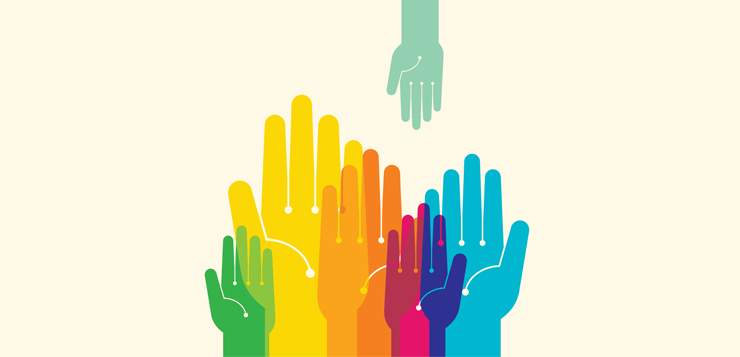Since it was published at the end of last year, one of the consistently best-selling books in the UK has been The Ladybird Book of Mindfulness. Part of a series of comic spoofs, the Ladybird version of mindfulness plays on the commonly-held perception that meditation practice is ostentatious and self-indulgent. Some of it is actually very funny—my favourite page is the one below—and virtually every mindfulness teacher I know was bought a copy for Christmas: one colleague received it five times.
As mindfulness continues to increase in popularity and visibility, so the critiques have emerged. This is a good thing, because cogent critique enables those of us who teach and trust in mindfulness to notice our blind spots, understand people’s objections, and refine our approach so we can respond skilfully. And perhaps the most pressing critique of mindfulness that needs addressing is that which has fuelled the Ladybird satire: what looks from the outside like self-regarding inactivity must surely entail a passive, socially-disengaged relationship with the world.
I wrote last year about how I’ve changed my core definition of mindfulness to: “the awareness and approach to life that arises from paying attention—on purpose, fully present, with curiosity and compassion.” I followed this up by exploring how explicitly including compassion—kindfulness—in this definition, highlights that mindfulness is not just “neutral noticing.” Rather, it entails an attitudinal shift, as we train in meeting experience with warmth, tenderness, and care.
It’s one of the paradoxes of mindfulness training that spending time in what looks like doing nothing is actually one of the most radical and transformative choices we can make.
The joining of awareness and compassion fuels a mindful approach to life. With sustained attention, we get to see what’s going on in our lives and the world, without being drawn into automatic reactions. Compassion enables us to connect to ourselves and others, inviting recognition of our shared difficulties, and inspiring an intention to alleviate them, where we can.
It’s one of the paradoxes of mindfulness training that spending time in what looks like doing nothing is actually one of the most radical and transformative choices we can make. It’s true that we usually begin with stillness, to help us connect to and manage our inner world. However, as we cultivate skill in working with ourselves, the focus naturally shifts outward. Studies have shown that more mindful leaders make for happier teams, while mindful parents make for happier children. When faced with someone in distress, mindfulness-trained people are five times as likely to respond with assistance.
Jamie Bristow, who is working with the UK Mindfulness All-Party Parliamentary group as director of The Mindfulness Initiative, recently pointed out that taking charge of our attention in a world of distraction is itself a political act. Rather than letting ourselves be drawn by the myriad of magnetic forces pulling on our minds, we can stop and steady ourselves in awareness, pausing to determine what decisions to make. When we approach options in life mindfully, it seems we are likely to make more rational and environmentally-friendly choices, as well as less materialistic ones.
This makes sense. We use the same modes of mind to relate with the world as we offer to ourselves—if we are kind with our inner thoughts and sensations, we will incline to be kind to the outer world too. Indeed, the very word kindness implies togetherness—”kinship.” As our mindfulness practice deepens, we realize that we cannot separate our own well-being from the welfare of those around us—research has confirmed that when those around us are happy, we are more likely to experience happiness ourselves. This recognition can inspire what the Dalai Lama calls “selfish altruism”—as we benefit from the contentment of those around us, it’s in our interest to help them. We are all in it together.
Cultivating generous, open-hearted attitudes such as kindness, gratitude, awe and altruism actually leads to greater well-being for the practitioner, irrespective of the effect it may have on others—making it even more wise to give our attention (perhaps newly reclaimed with mindfulness) to this work. Without any need to be driven by externally-imposed morality or ethics, mindfulness practice helps us find a social conscience, and act upon it.
Until recently, the dominant public narrative of mindfulness has focused on the benefits for individuals—by slowing down, paying more attention, and letting go of reactivity, we pave the way for reduced stress and greater personal contentment. While this is true, and the sensible place to start, perhaps it’s time for a more socially-engaged story of mindfulness to emerge. As we make a deeper journey into the heart of mindfulness, we discover it leads to a heartfelt, warm, and altruistic expansion of energy out to the world, rather than a retreat from it.







